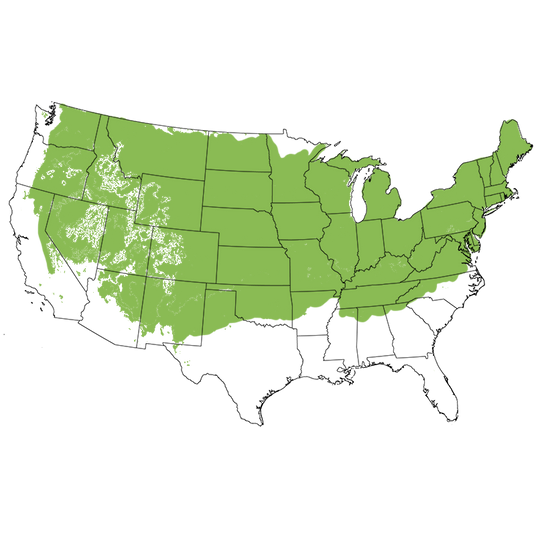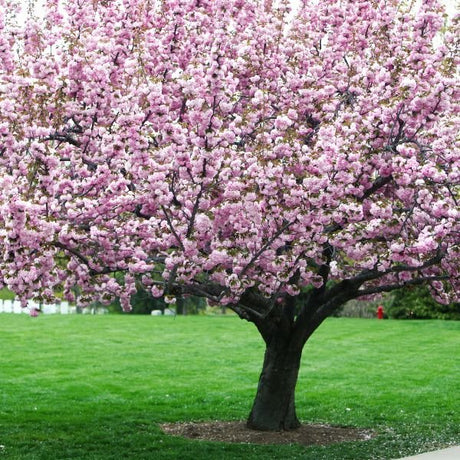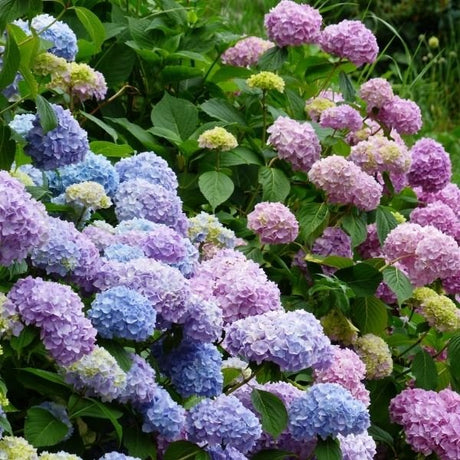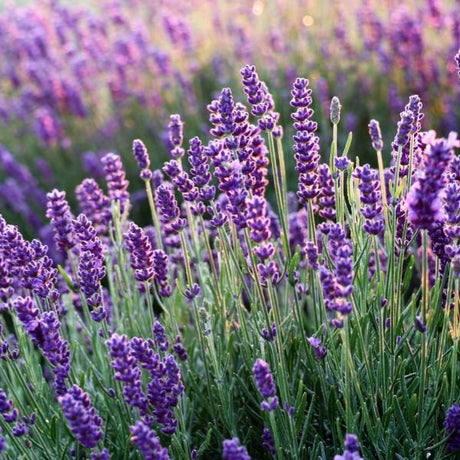Onondaga Viburnum
Viburnum sargentii 'Onondaga'
- Stay Protected with Plant Sentry ™
Onondaga Viburnum is backordered and will ship as soon as it is back in stock.
Plant Sentry™
Plant Sentry™

Plant Sentry™ Protected
Your order is protected by our compliance system that:
- Prevents restricted plants from shipping to your state
- Ensures plants meet your state's agricultural requirements
- Protects gardens from invasive pests and diseases
Delivery and Shipping
Delivery and Shipping
Delivery and Shipping
Fast, Safe Plant Delivery
Ships in 3-4 business days • Tracking provided • Weather protected
| Under $50 | $9.99 |
| $50 - $99.99 | $14.99 |
| $100 - $149.99 | $16.99 |
| $150+ | $24.99 |
✓ Zone-specific timing • ✓ Professional packaging • ✓ Health guarantee
Understanding Plant Options
Nature Hills offers plants in two main formats:
- Container Plants: Grown in pots with soil, sized by container volume and plant age
- Bare Root Plants: Dormant plants without soil, sized by height measurements
Container Plant Sizes
Container sizes indicate plant age and growing capacity rather than liquid volume equivalents. Our containers follow industry-standard nursery "trade gallon" specifications, which differ from standard liquid gallon measurements.
Young Plants (6 months to 18 months old)
| Container Size | Actual Volume | Metric Equivalent |
|---|---|---|
| 2" x 2" x 3" | 0.18 - 0.21 dry quarts | 0.20 - 0.23 dry liters |
| 4" Container | 0.31 - 0.87 dry quarts | 0.35 - 0.96 dry liters |
| 4.5" Container | 0.65 dry quarts | 0.72 dry liters |
| 6" Container | 1.4 dry quarts | 1.59 dry liters |
| 1 Quart | 1 dry quart | 1.1 dry liters |
| 5.5" Container | 1.89 dry quarts | 2.08 dry liters |
Established Plants (18 months to 2.5 years old)
| Container Size | Actual Volume | Metric Equivalent |
|---|---|---|
| 2 Quart | 2 dry quarts | 2.2 dry liters |
| #1 Container | 2.26 - 3.73 dry quarts | 2.49 - 4.11 dry liters |
| 5" x 5" x 12" | 3.5 - 4.3 dry quarts | 3.85 - 4.74 dry liters |
Mature Plants (2-4 years old)
| Container Size | Actual Volume | Metric Equivalent |
|---|---|---|
| #2 Container | 1.19 - 1.76 dry gallons | 5.24 - 7.75 dry liters |
| #3 Container | 2.15 - 2.76 dry gallons | 8.14 - 12.16 dry liters |
Large Plants (3-5 years old)
| Container Size | Actual Volume | Metric Equivalent |
|---|---|---|
| #5 Container | 2.92 - 4.62 dry gallons | 12.86 - 20.35 dry liters |
| #6 Container | 5.25 - 6.01 dry gallons | 23.12 - 26.42 dry liters |
| #7 Container | 5.98 - 6.53 dry gallons | 26.34 - 28.76 dry liters |
Bare Root Plants
Bare root plants are sold by height from the root system to the top of the plant. Plants may exceed minimum height requirements.
Common Sizes:
- Trees: 1 foot, 2 feet, 3 feet, 4 feet, 5 feet, 6 feet
- Shrubs & Perennials: 1 foot, 18 inches, 2 feet
Important Notes
Container Volume Specifications
- Trade Gallon Standard: Our containers follow industry-standard "trade gallon" specifications established by the American National Standards Institute (ANSI Z60.1) for nursery stock
- Volume Variations: Actual soil volume may vary due to plant root systems and growing medium settlement
- Age Indicators: Container size primarily indicates plant age and maturity rather than liquid volume equivalents
Growing Conditions
- Plant size can vary based on variety and growing conditions
- Container size helps indicate plant maturity and establishment level
- Larger containers generally mean more established root systems and faster landscape establishment
Seasonal Availability
- Bare root plants are available seasonally when dormant
- Container plants are available throughout the growing season
- Specific varieties may have limited availability in certain sizes
Questions?
For questions about specific plant sizes or availability, please contact our plant experts who can help you choose the right size for your landscape needs.
Plant Highlights
Onondaga Viburnum highlights at a glance!
Specifications
Specifications
-
Brand
-
Botanical Name
-
Growing Zones
-
Mature Height
-
Mature Spread
-
Sun ExposureFull Sun
-
Moisture
-
Soil
-
Growth RateFast
-
Flower Color
-
Fall Color
-
Pollinator Friendly
-
Pollinator Required
-
Pruning Time
-
Bloom PeriodLate Spring

Growing Zones 4-7
Onondaga Viburnum (Viburnum sargentii 'Onodaga') is a perennial shrub with highly ornamental qualities! Your Onondaga Viburnum leaves emerge in spring with a deep maroon hue splashing across each leaf! As spring turns to summer, you'll see your foliage transform to maroon-tinted green. With the development of new leaves, the contrast of the two colors is simply stunning!
Spring also marks the beginning of Onondaga's glorious flowers, which begin as maroon buds but quickly open to 5-inch, flat-topped clusters of pink-tinted white blossoms. The bees and butterflies will not be able to resist! The color combination creates the most unique ornamental flowering shrub you have ever seen! The textured, crinkled foliage looks handsome as a backdrop to both the lacecap flowers and the future clusters of bright berries!
And if you need more of a reason to pick up a few of this incredible Viburnum variety, once autumn sets in, the cooler weather brings bright red fall foliage and scarlet berries that will persist into winter - much to the delight of your local birds. Hardy throughout USDA growing zones 4 through 7, these cold-hardy shrubs are disease-resistant, rarely bothered by deer, and stay to a neat and tidy 6-8 feet in height and width!
Planting and Application:
These make a spectacular backdrop for a perennial bed or plant several along an outbuilding for a lively hedge. The more you plant, the more pollination occurs - giving you and your songbirds more berries to delight in each autumn! You'll feel good providing so much nectar and pollen for your local pollinators, and a buffet for your migratory and backyard birds! Not to mention the shelter and nesting you'll create for all your area wildlife! Try mixing Onondaga with the pillowy white lacecap blossoms of Chiquita Viburnum for increased pollination and the number of berries each year!
Onondaga Viburnum is a deciduous shrub with an upright habit that becomes more rounded with maturity. So it looks fantastic as a foundation shrub, encircling seating areas for privacy and seclusion, in mixed-shrub borders and boosting flower power and fall color of shelterbelts, hedges, planting in berms hiding your front yard from the street, and updating a tired cottage garden. Create a unique accent by exposing the lower portions of the multi-trunked form for a classical tree-like focal point!
- Maroon Buds Ringed By Pinkish-White Lacecap Blossoms
- Dark Maroon Tinted New Foliage Ages To Maroon-Green!
- Superior Color & 4-Season Interest
- Autumn Brings Bright Red Foliage & Scarlet Fruit
- Bird & Butterfly Interest, Hedge, Privacy, Specimen, Foundation & Backdrop
#ProPlantTips for Care:
Plant this type of Viburnum in full sun for the most flowers and fruit, but it will still grow fast and healthy in partial shade! Any well-drained, moderately moist soil will suit Onondaga just fine. It's quite hardy, unattractive to deer and other pests, and adapts to a variety of soil conditions!
Because Onondaga blooms on old wood, wait to prune until that flush of flowers is done, then prune. But to enjoy fruit as well, instead, only renewal prune by removing the oldest, fattest stems a few at a time. This revitalizes the shrub by keeping berries and younger, more vigorous growth. Add a 3-4 inch thick layer of mulch over your root system.
- Full Sun & Partial Shade
- Adaptable to Most Well-Drained Soil
- Average to Higher Moisture Needs & Appreciates Mulched Beds
- Prune After Flowering
- Deer tend to leave it alone
- Juglone Resistant
Fresh and unexpected color on an incredible flowering deciduous bush! The Onondaga Viburnum is one of those shrubs you can plant and forget - and yet it turns everyone's heads. It's a terrific investment in an ornamental shrub for your yard this summer!











